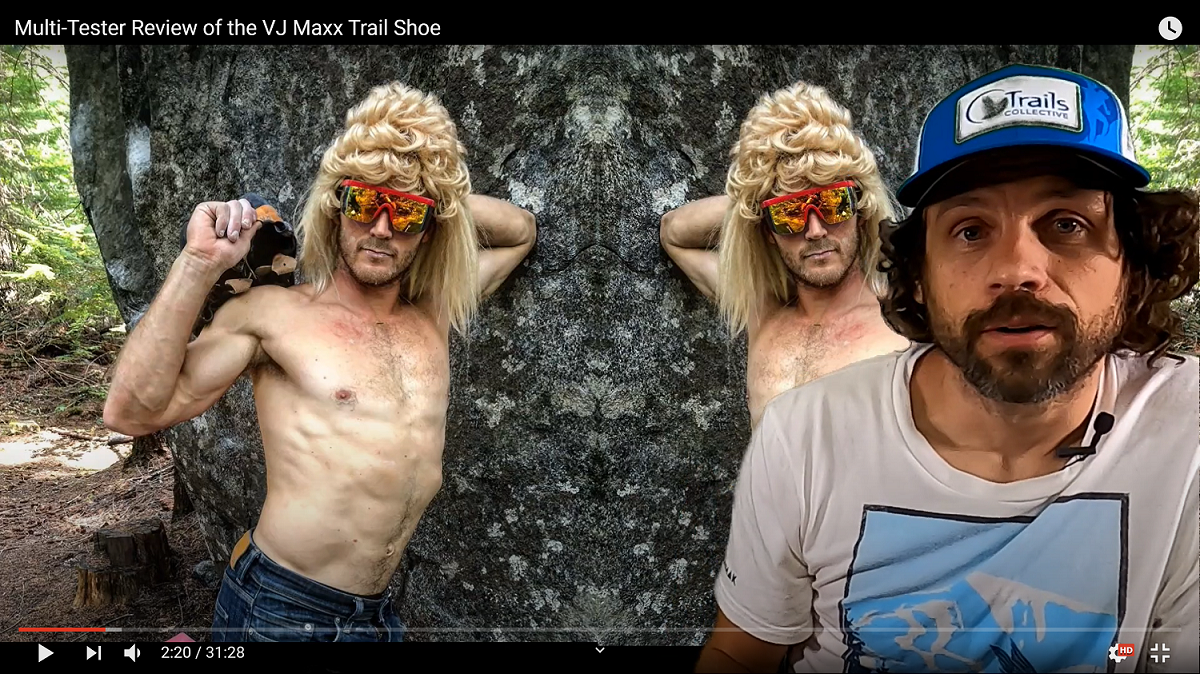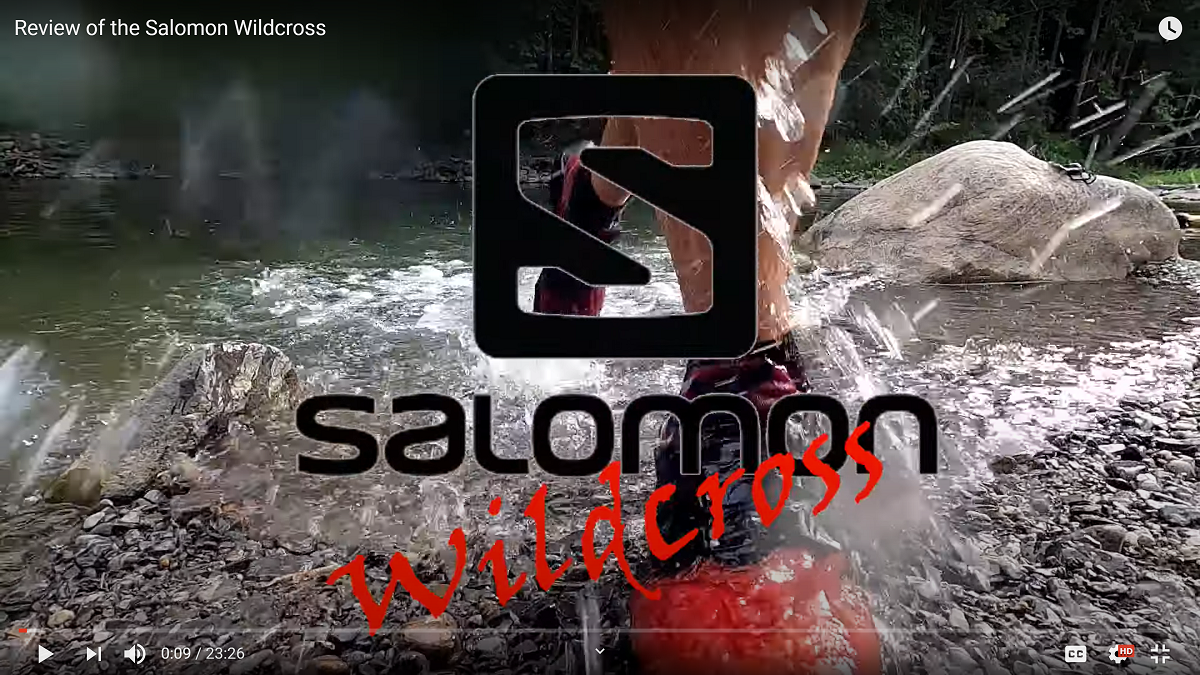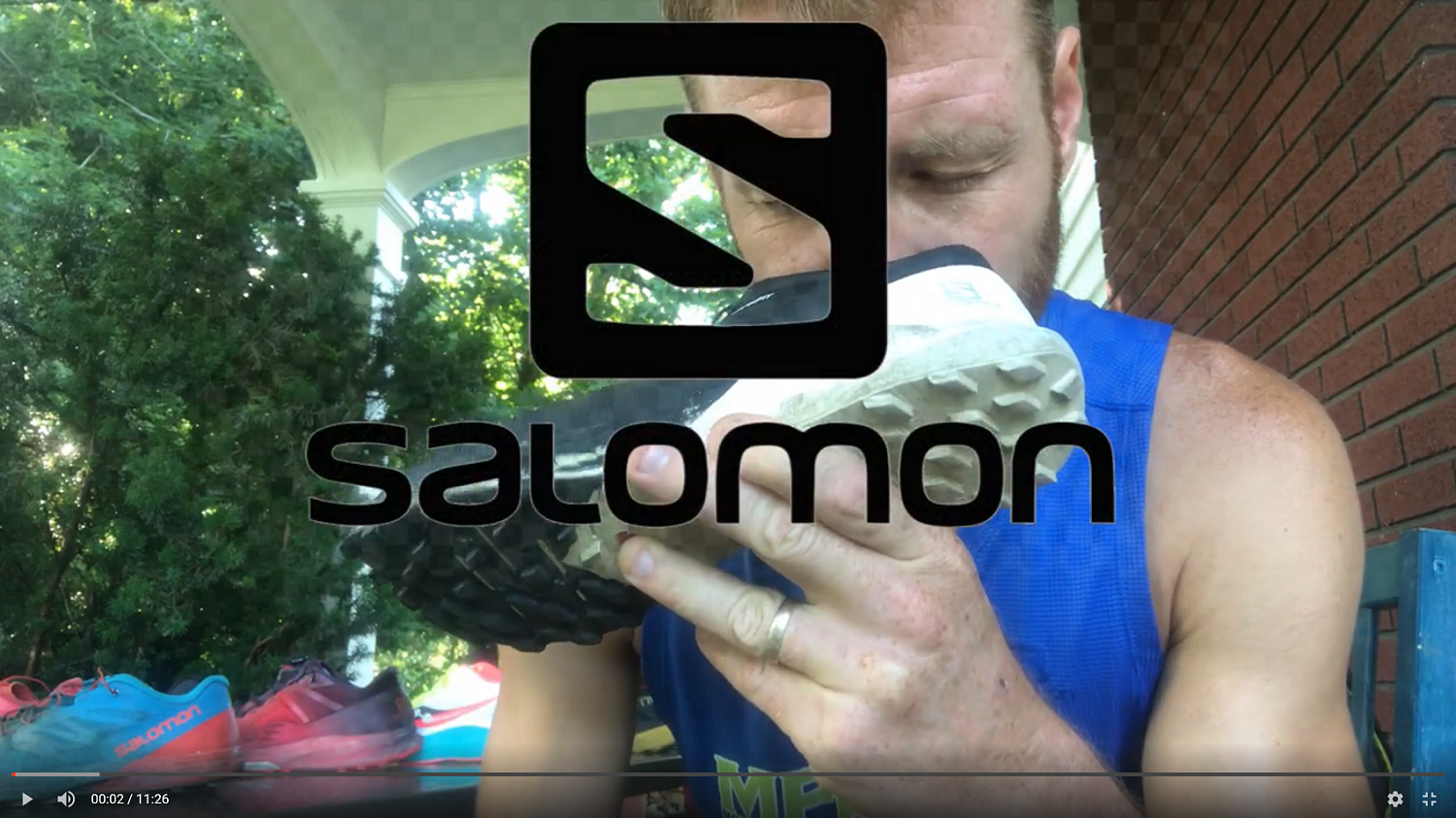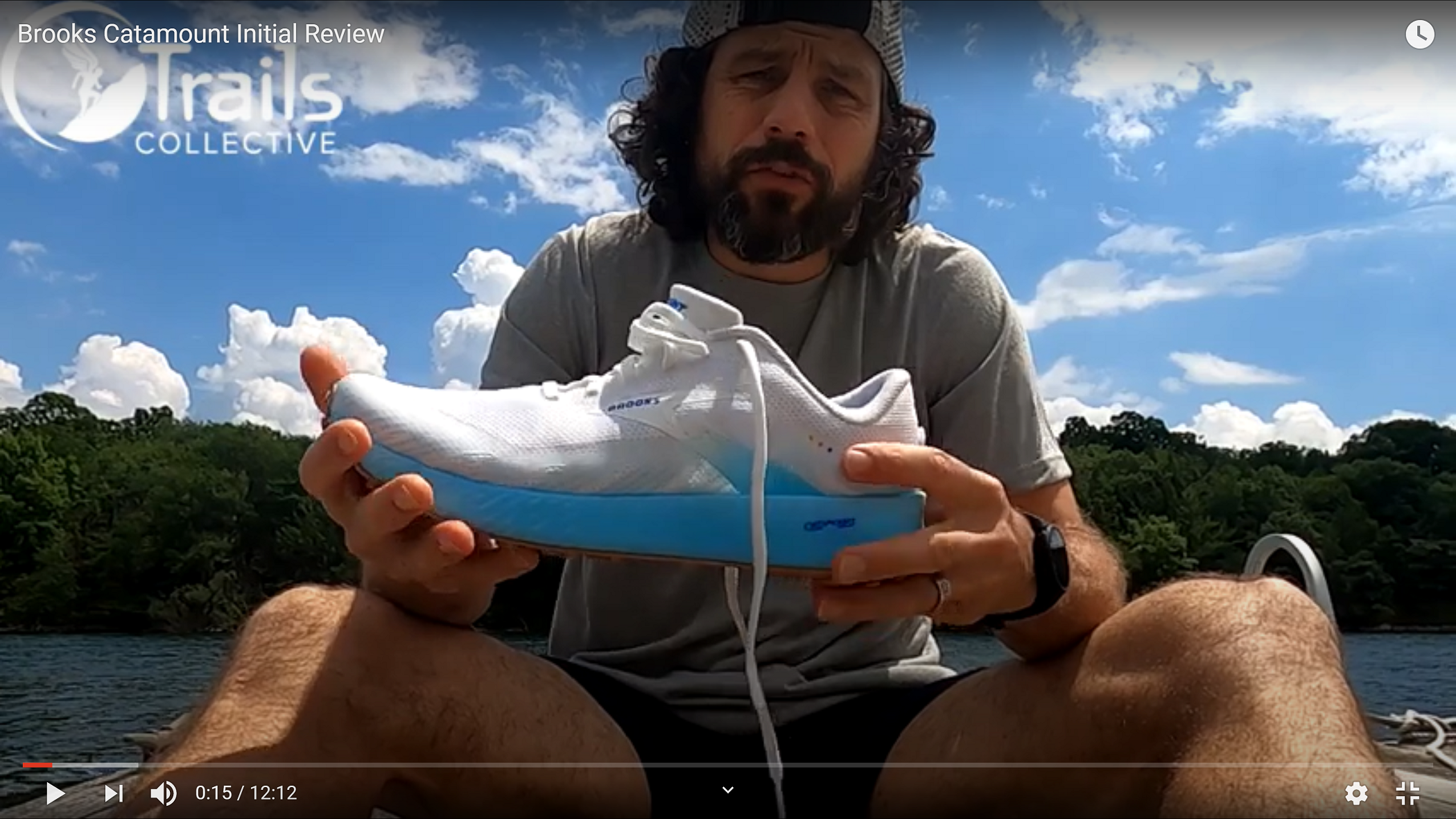Review of the VJ Maxx
Below you’ll find a chunk of the YouTube review of the VJ Maxx linked above. In addition to Ian, two other choice reviewers were in on the testing. The first is my teammate, Ben Nephew. Ben is arguably one of the best technical trail runners of the past two decades. For much of that time, he’s done wear testing and weighed in on materials and design for Inov-8. He knows a bit about performance, grip, and durability.
The second individual is a friend Robert Seltzer. Robert’s feedback I feel is critical to test the claimed properties of this shoe as historically, he’s consistently destroyed shoes and gear. For shoes, he’s blown out the upper in the lateral forefoot, in most any shoe we’ve had him in over the past 8 years, whether, as evidencecd in the video, Hoka, Hoka, Altra, Altra, Saucony, Saucony, and nearly Topo. Yeah, he’s pretty consistent. If somebody’s a good candidate to test the Maxx, it’s Robert. And he’s pretty particular about the level of traction needed. (trail / ultra runner apt to destroying shoes in short order) weigh in with their thoughts. Watch the video to get their voice as well, and read on for Ian’s.
Intro
The Best Grip On the Planet. When you hear that phrase, maybe you think of the most iconic free climber of all time, Alex Honnold, sticking a literally life or death grip in both hands and feet on the 13a rated Boulder Problem in the middle of his Free Solo send of El Capitan.
Maybe it’s the sheer grip strength possessed by Donna Moore, the World’s Strongest Woman in successfully lifting the 733 lb Scottish Dinnie Stones in Scotland.
Or maybe, closer to home, you think of Ben Nephew’s OROC cleats needing to grip the bare rock of one of the most technical race pitches in the country, Breakneck Point, as he descended en route to an FKT in 2014 in this clip from Mountain Peak Fitness, and where a lack of grip could yield serious injury or death at that effort.
Well, there’s one company out there staking the claim to the title with the slogan and hashtag, #BestGripOnThePlanet. That’s VJ.
VJ is a company and rooted in the design of light and rugged footwear born in the forest of Finland and in the context of orienteering. The footwear must offer protection and durability needed to cover unpredictable and variable terrain, durability to withstand tearing in off-trail sections, and traction sufficient enough to stick where there is no trail.
The product has grown to meet related demands and be embraced by some of the top OCR racers in the world, individuals like Ryan Atkins. I’ve witnessed the brand fanning out through the Adirondack community who’s had connections to Ryan, and a crew who demands much out of their gear.
For this round, we’re going to dig into one one of their models which I chose out of the lineup based on its intention for endurance, a bit more volume in the forefoot, and a more versatile lug pattern. That is, the VJ Maxx, a model that VJ developed in collaboration with Brit Jonathan Albon, an OCR, Trail, and Sky Running world champion.
Alright…the Maxx from the ground up.
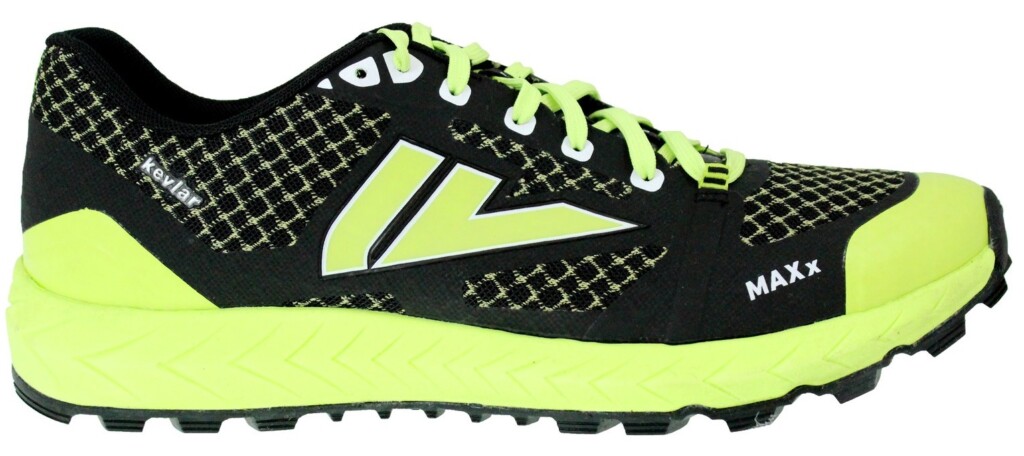
Relative Stats
Stack Height: 16mm in the heel, 10mm in the toe. Add in the 4mm lugs for a combined stack of 20mm in the heel and 14mm in the forefoot.
“Drop” or Differential: 6mm
Weight is 8.8 oz (or 250g) for a men’s size US 8.5 is the VJ reported weight. Without full size runs in hand I can’t verify. Runner’s World puts them at 9.4 oz for men, 8.5 for women. That feels right to me.
Cost: $160
My Preferences
So let’s dig into the shoe a bit. To know what I’ve enjoyed in shoes, and as it colors reviews:
- Versatility, models which can cross between both technical trail and through hard-pack or road sections
- Models without stone guards (for most models and situations I think they’re overrated and unecessary)
- Models with good ground feel and a low profile
- Models with a decent amount of splay room in the toebox.
The General Shape and Out of the Box Feel
For me, right out of the box, it feels like a technical jackknife. The volume in the upper is relatively shallow. The toe box though feels right on, providing a bit of birth for my metatarsals to splay. The taper isn’t too aggressive and without noticeable contact on my toes, but not too roomy where it feels like I”ll swim, or shift forward to bash my toes on descents. The arch contour feels middle of the road and nothing too remarkable.
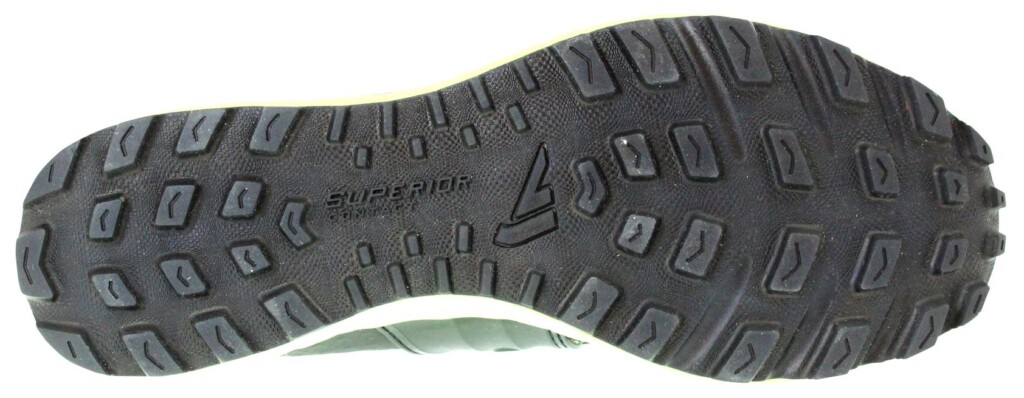
The Outsole
The MaxX has 4 mm lugs with greater surface area at the heel and forefoot. While the lug line to the rear of your metatarsals form a rough chevron or V shape, the outsole pattern is fairly unremarkable. What it does offer is a good amount of surface area for a relatively smooth underfoot feel, making them able to cross between sections of hardpack if not pavement. The spacing keeps mud from sticking and collecting between the lugs themselves. And the slight grooves in the forefoot provide a bit of flex in break points.
What is remarkable though is VJ’s use of 100% Butyl Rubber, a rubber which resists oxidation and breakdown, and offers exceptional stickiness. Underfoot they feel like technical mountain shoes. You notice out of the gate the firm nature of the outsole rubber, as well as a bit of stiffness in materials and shank. Within the first 50 miles that either broke in a bit, or I just got used to the feel. Maybe a bit of both.
The Butyl Rubber does indeed feel pretty exceptional. The spaced flat lugs, at only 4mm depth, allows the Maxx to run pretty smoothly (for a technical and mountain shoe) over versatile terrain. Although it’s not a cushioned underfoot feel crossing hardpack or paved sections, and where you can hear the protection underfoot, it’s also not a rough ride. On trail you can truly feel the protection and they do indeed convey a feeling of trust and protection over rough patches. Closest match would probably be Inov8 Graphene, but Inov8’s graphene models are either zero drop which my legs don’t love, or too tapered in the toe, so unfortunately I haven’t been able to put Graphene to the test myself. In putting them side by side with the Salomon Wildcross’s Contragrip, the Wildcross lug configuration gripped at dry / soft ground a bit better, but the VJ’s surface and Butyl held their own better on moist surfaces.
The Midsole
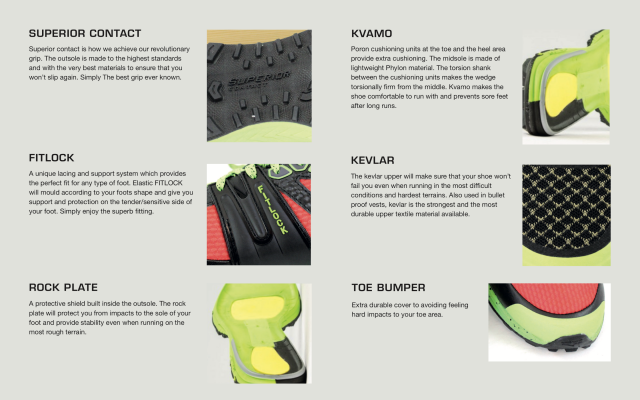
The midsole material of choice is Phylon. First used in dolls sometime long ago, it’s a compressed EVA material which is soft, light, but also impervious to water and microbials. As Ben mentioned as we chatted a bit, the density, look, and underfoot feel is similar to the Scott Supertrac RC of a couple years past, but that, if I recall, used Aerofoam which was light, soft, and with exceptional durability.
Set into the Phylon of the Maxx midsole at the heel and toe are Poron cushioning units. Poron? Yup, Poron. Kinda like Porn, but with an extra O thrown in for good measure. And making for good trail material porn it does as it’s a pretty fantastic urethane foam which has an extremely low compression set which makes it dense and durable. In that regard, maybe it’ll last similar to that Supertrac.
Set between the Poron units is a torsion shank which increases torsionally rigidity and stability between those cushioned pods.
Rockplate:
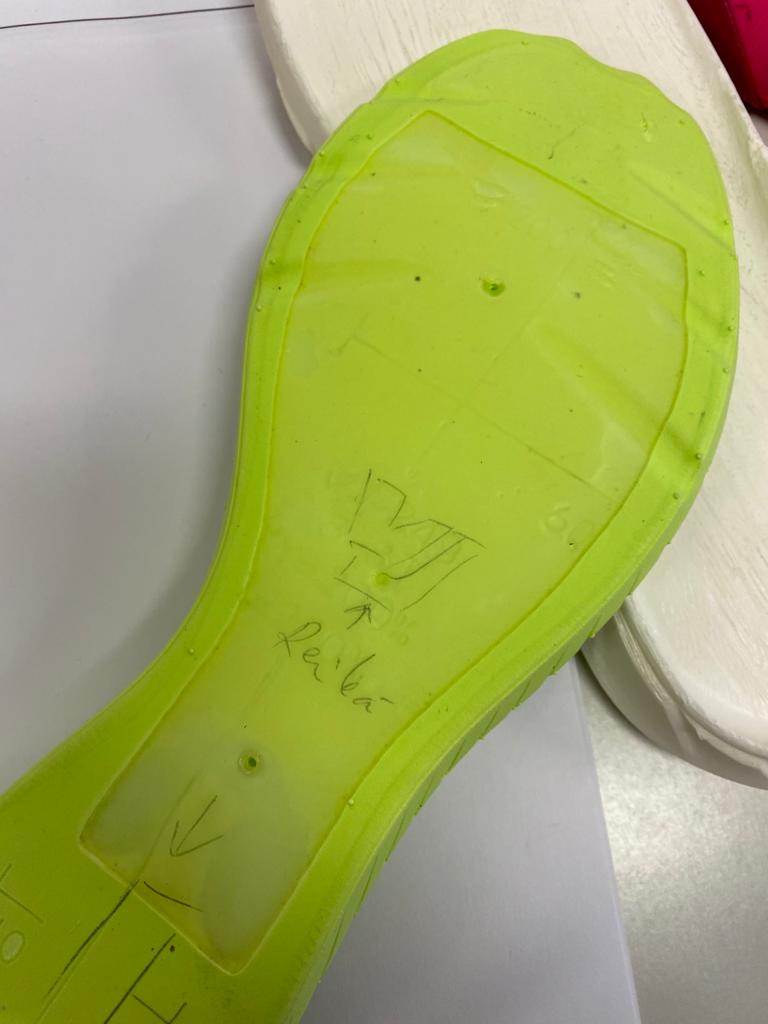
It also is a rare bread in offering a full-length stone guard, in this case, in the form of a denser EVA layer.
The Upper
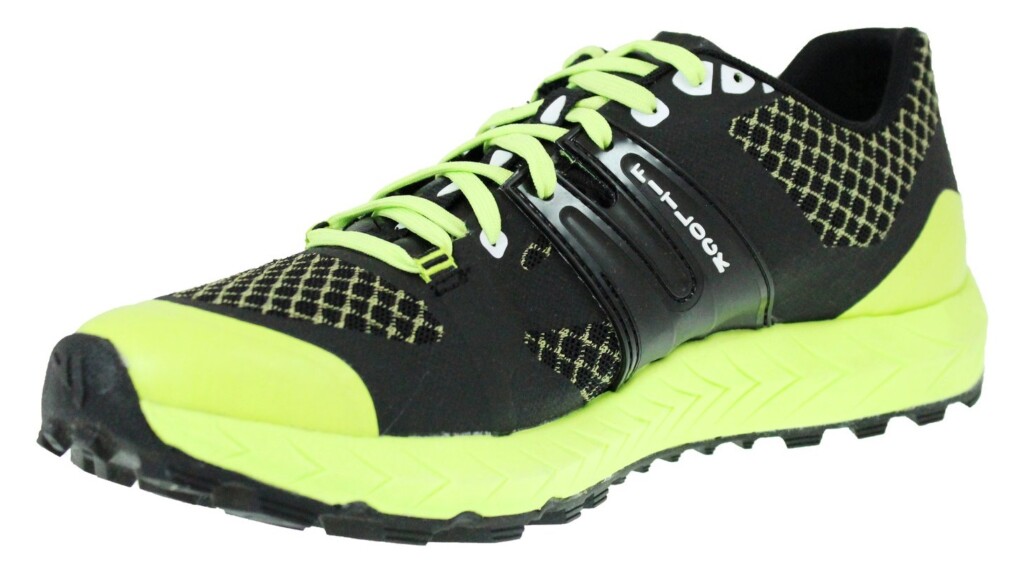
The Maxx is maybe the only shoe that will serve you well if you happen to run into a sword-wielding Monty Python Black Knight on the trail. Why? Kevlar. Yup, Kevlar is woven into the upper. That paired with rubberized toe guards and overlays gives the MaxX one of if not the most durable upper out there. At least one that still allows your foot to breath and run.
The tongue. Leather clad and padded, and as noted in most reviews comes up short at the ankle. For me it makes it a bit of a pain to slip it on without unlacing / lacing, but I haven’t had any issues in feel on the run. while no doubt the fitlock is adding support through the arch, I don’t actively notice it.
You feel the integrity in the upper immediately and it makes synching the laces slightly more difficult than shoes with softer uppers. Once laced and set though I’ve not had any issues with them loosening or the laces coming untied. That integrity in the upper though also leaves it without much room for push, and that’s something that’s noticeable at the outset.
Additionally you have an inner band which they call FitLock which is an elastic moldable material which in time gives to your foot, wraps the inside. They also have a full rubberized toe bumper or guard to keep your dogs protected when kicking rocks on descents and drain decently well in wet conditions.
Durability:
A hundred or so miles in I do see some outsole wear though as I have in all shoes. I typically will wear through the outer heel rubber of all shoes, it’s just where I strike and get abrasion. Based on how firm the Butyl rubber felt, I was expecting to get hundreds of miles out of these, but, I’ve unfortunately punctured through the outsole rearmost lug in somewhere north of only 100 miles. I’ve gotten better durability out of Vibram, with a similar feel of protection. But, I think VJ’s Butyl has better grip at less weight than Vibram. So, it’s a bit of a trade off there, and may not make a difference for someone not prone to wear through outsoles in short order. For Robert, known to blow out every upper he’s met, he’s pushing 400 miles. Aside from a bit of opening tongue abrasion, the upper in his is holding strong.
Aside from some crease marks in the upper, I’ve had no issues or frays. The tongue’s leather padding and surface cover, at the points where the laces synch in, did wear fairly quickly, but it hasn’t seemed to matter on functionality and it doesn’t seem to be wearing through to a base layer so I think its just an aesthetic impact.
Takeaway
VJ has earned a solid base and loyal following in the Orienteering and OCR world. They should make decent gains in the trail dedicated space, even if a tough road for trail-only brands to find a footing. I don’t think the Maxx is going to take the cake as far as out of the box plush rides go, but, they do convey immediate confidence in materials, and they run along those lines. Their outsole rubber is pretty outstandingly sticky, and the upper is proving to be relatively bombproof. At a price point of $160, they’re on the upper end of the spectrum. But, if they indeed prove to remain exceptional in durability and quality, and in the areas such as upper which have been issues for you, then the value is there, and should give you more miles per dollar than most.
Thus far they are living up to the slogan, with pretty exceptional traction for a pretty versatile chassis. For someone looking for a solid technical trail model with good protection, median volume, and not requiring a plush underfoot feel, this could be your match.
Ready to get them on your own feet? Give us a shot via the Trails Collective shop: https://trailscollective.com/shop/?fp=vj-maxx
Add Comment
You must be logged in to post a comment.


